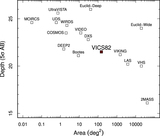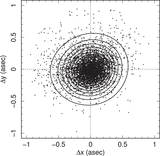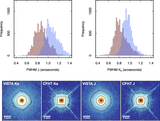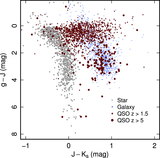Image Details
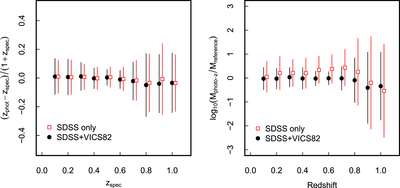
Caption: Figure 9.
(left) Photometric redshift accuracy for galaxies as a function of redshift, comparing fits using just SDSS (Stripe 82 coadd) photometry and the combination of SDSS+VICS82. The error bars reflect the 1σ standard deviation in the residual. Since key photometric fitting features such as the 4000 Å break are still in the optical bands out to ﹩z\approx 1﹩, this is likely the reason (in combination with the SDSS Stripe 82 optical depth) that the scatter remains similar. (right) The improvement in stellar mass estimates (using photometric redshifts) when VICS82 photometry is added to SDSS, where the reference mass is derived from the best-fitting SED template for galaxies where the spectroscopic redshift is known. We make a cut in stellar mass ﹩\gt {10}^{9}\,{M}_{\odot }﹩. There is a clear gain in accuracy when including the VICS82 near-infrared photometry in the stellar mass estimates out to ﹩z\approx 1﹩, and this is where the real benefit of the wide VICS82 survey can be found.
Copyright and Terms & Conditions
© 2017. The American Astronomical Society. All rights reserved.


